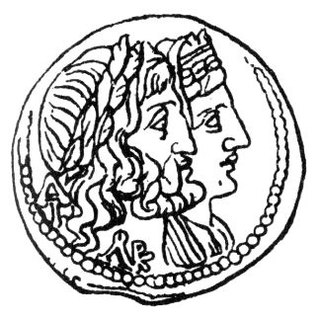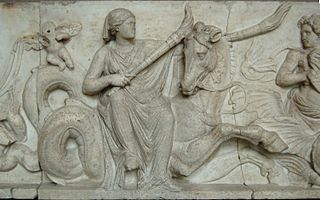 W
WIn Greek mythology, the Oceanids or Oceanides are the nymphs who were the three thousand daughters of the Titans Oceanus and Tethys.
 W
WIn Greek mythology, the nymph daughters of the Titan Oceanus (Ocean), were known collectively as the Oceanids. Four ancient sources give lists of names of Oceanids. The oldest, and longest such list, given by the late 8th–early 7th century BC Greek poet Hesiod, names 41 Oceanids. Hesiod goes on to say that these "are the eldest ... but there are many besides" and that there were "three thousand" Oceanids, a number interpreted as meaning "innumerable". While some of these names, such as Peitho, Metis and Tyche, certainly reflected existing traditions, many were probably mere poetic inventions. The probably nearly as old Homeric Hymn to Demeter lists 21 names, 16 of which match those given by Hesiod, and were probably taken directly from there.
 W
WIn Greek mythology, Amaltheia is the most-frequently mentioned foster-mother of Zeus.
 W
WIn ancient Greek mythology, Amphitrite was a sea goddess and wife of Poseidon and the queen of the sea. She was a daughter of Nereus and Doris. Under the influence of the Olympian pantheon, she became the consort of Poseidon and was later used as a symbolic representation of the sea. In Roman mythology, the consort of Neptune, a comparatively minor figure, was Salacia, the goddess of saltwater.
 W
WCalypso was a nymph in Greek mythology, who lived on the island of Ogygia, where, according to the Odyssey, she detained Odysseus for seven years.
 W
WClytie, or Clytia was a water nymph, daughter of Oceanus and Tethys in Greek mythology. She loved Helios in vain.
 W
WDione was an ancient Greek goddess, Titaness primarily known from Book V of Homer's Iliad, where she tends to the wounds suffered by her daughter Aphrodite.
 W
WDoris, in Greek mythology, was a sea goddess, daughter of Oceanus and Tethys and wife of Nereus. By Nereus, she is mother to Nerites and the fifty Nereids, including Thetis and Amphitrite.
 W
WIn folklore, a mermaid is an aquatic creature with the head and upper body of a female human and the tail of a fish. Mermaids appear in the folklore of many cultures worldwide, including the Near East, Europe, Asia, and Africa.
 W
WMetis, in ancient Greek religion, was a mythical Titaness belonging to the second generation of Titans.
 W
WThe Naked Ladies are a Grade II listed statue complex on a rockery and water cascade in the gardens of York House, Twickenham, in the London Borough of Richmond upon Thames, England. The larger than human size statues depict eight Oceanids and a pair of aquatic horses. They were carved in the fin de siècle style from white Carrara marble and probably came from Italy in the late nineteenth century or very early twentieth century. Originally they were part of a larger set of statues that was subdivided after the suicide of the initial purchaser.
 W
WIn ancient Greek religion, Nemesis, also called Rhamnousia or Rhamnusia, is the goddess who enacts retribution against those who succumb to hubris, arrogance before the gods.
 W
WIn Greek mythology, Peitho is the goddess who personifies persuasion and seduction. Her Roman equivalent is Suada or Suadela. She is typically presented as an important companion of Aphrodite. Her opposite is Bia, the personification of force. As a personification, she was sometimes imagined as a goddess and sometimes an abstract force with her name used both as a common and proper noun. There is evidence that Peitho was referred to as a goddess before she was referred to as an abstract concept, which is rare for a personification. Peitho represents both sexual and political persuasion.
 W
WIn Greek mythology, Styx is a deity and a river that forms the boundary between Earth and the Underworld. The rivers Acheron, Cocytus, Lethe, Phlegethon, and Styx all converge at the center of the underworld on a great marsh, which sometimes is also called the Styx. According to Herodotus, the river Styx originates near Pheneus. Styx is also a goddess with prehistoric roots in Greek mythology as a daughter of Tethys, after whom the river is named and because of whom it had miraculous powers.
 W
WTyche was the presiding tutelary deity who governed the fortune and prosperity of a city, its destiny. In Classical Greek mythology, she is the daughter of Aphrodite and Zeus or Hermes. The Greek historian Polybius believed that when no cause can be discovered to events such as floods, droughts, frosts, or even in politics, then the cause of these events may be fairly attributed to Tyche.
 W
WIn Greek mythology Zeuxo was an Oceanid. Her name appears in Hesiod's catalogue of Oceanid names; no other literary mention of her survives.